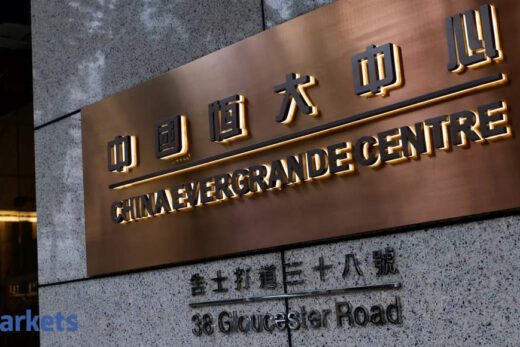Managing Director Harsha Kadam sounded caution on the volatile external scenario. But analysts are unfazed. Their price targets suggest up to 22 per cent potential upside for the stock.
On Friday, the scrip of the midcap firm traded at Rs 5,302 apiece, up marginally in a depressed market. At this price, the stock trades below its historical average P/E of 28.6 times.
Post March quarter earnings, Kadam said the second wave of Covid-19 is not showing signs of ebbing, and this could lead to dampening of consumer spirits and potential disruption to trade. His company derives half its revenues from the automotive segment.
India’s auto sales grew 76 per cent in March 2021. Analysts say sales will remain under pressure in the near term amid Covid-related restrictions in several states and a recovery is expected only from the second quarter of this financial year.
Edelweiss has revised its price target for the stock upward to Rs 6,456 from Rs 5,915 earlier. “While we are cognisant of commodity price pressure and the fallout of the Covid second wave, our optimism on Schaeffler rests on three key cogs: steady focus on localisation, rising content per vehicle and thrust on innovation,” it said.
Antique Stock Broking finds the stock worthy of Rs 6,305. It said the company has seen an increase in its content per vehicle after the transition to BS-VI norms and received new orders for DCT Damper, besides winning business from key automakers by offering a complete basket of products for the new powertrain platforms.
Sharekhan has revised its target upward on the stock to Rs 6,300. It expects the company’s Ebita margin to improve on the back of operating leverage and significant investments to increase localisation over the past two years.
JM Financial is a bit cautious and has a target of Rs 5,600 on the stock, still higher than Rs 5,400 earlier. The domestic brokerage said rising input costs, dampening of sales due to the second wave of Covid and higher ocean freight rates are likely to keep margins depressed in the 16-17 per cent range.
Schaeffler India manufactures a vast range of ball bearings, cylindrical roller bearings, deep groove balls, spherical roller bearings, and wheel bearings sold under the brand name of FAG. It produces engine and transmission components, in addition to clutch systems and dual mass fly wheels for passenger cars, LCVs, heavy commercial vehicles, and tractors that are sold under the brand of LuK.
The company derives about 48 per cent of revenues from the automotive segment, 42 per cent from the industrial segment and 10 per cent from exports.
The company saw March quarter profit jump 78.1 per cent YoY to Rs 139.5 crore from Rs 78.3 crore a year ago. Total revenue jumped 48.1 per cent to Rs 1,316.8 crore. Ebitda margin expanded by 138 bps to 16.2 per cent as a result of the cost flexing programme and higher localisation. Plant-level utilisations for the quarter normalised to pre-Covid level.
Segment-wise growth
The automotive segment derived 52 per cent of revenues for the quarter. Schaeffler said it saw a 67 per cent YoY growth in the tractor segment while the personal vehicle segment saw a 31 per cent expansion YoY; two-wheeler 26 per cent and commercial vehicle segment 13 per cent.
The company said it took price hikes in the aftermarket to protect margin erosion amid commodity price pressure. It sees stabilisation of the mix (diesel and gasoline) with a shift in production mix in favour of gasoline cars accretive, given BS VI-compliant gasoline products have higher content.
In the case of the industrial segment, the company launched a spate of products in spherical and tapered bearings, targeting the opportunity in railways and wind energy. With increasing localisation, reduced lead times and competitive prices, the company management is aiming to gain higher market share.
The company is targeting its content per vehicle to increase to Euro 50-plus in the next three years from Euro 38 2020. It has increased its capex guidance by 20 per cent to Rs 1,200 crore for the next three years from Rs 1,000 crore earlier. While the second wave is a concern, the company said more than 99 per cent of its eligible employee base has been vaccinated.
Improving momentum
Sharekhan said Schaeffler’s performance has improved strongly over the past two quarters, aided by a strong recovery in the automotive segment as well as industrial segment.
It noted that exports continued to contribute nearly 10 per cent to revenue. “We expect a good bounce back from 2021, driven by normalisation of economic activity, improvement in content per vehicle in auto OEMs, strong growth in the wind power and railways businesses, and launch of new products in the aftermarket segment,” Sharekhan said as it increased its earnings estimates by 3.1 per cent for 2021 and 3.9 per cent for 2022.
This brokerage expects Schaeffler to log a 21.7 per cent revenue growth CAGR during 2020-2022 and a 280 basis points improvement in Ebitda margin.
Edelweiss sees Schaeffler as a proxy for the mobility theme. “The company would benefit from rising localisation and continued innovation. It is also undertaking a Rs 1,200 crore in capex to leverage the uptick,” the brokerage said.



